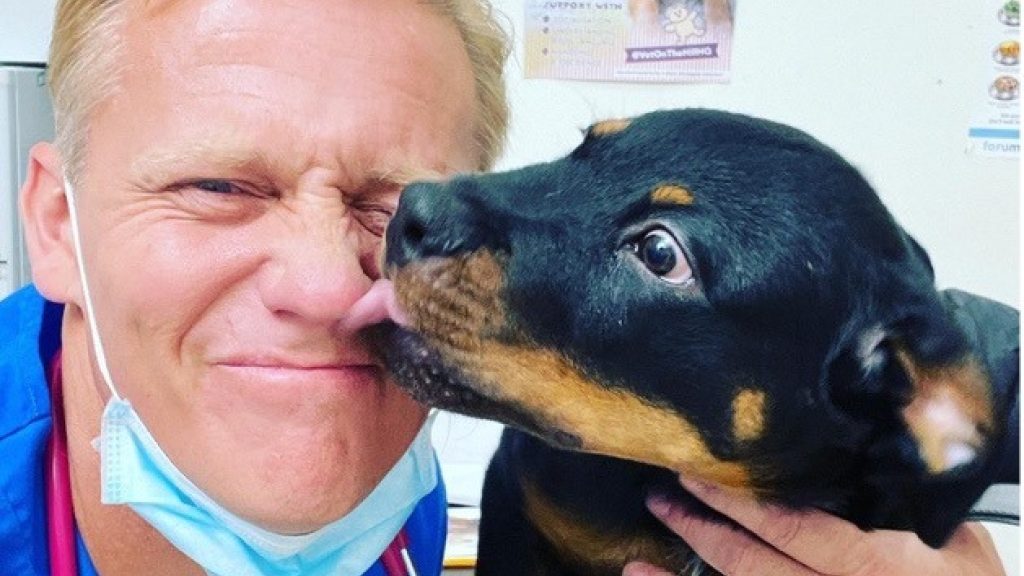
Poo-ch happens: the expert guide to your dog's poo - with Vet Dr Scott Miller
All dog owners know that when their dog needs to poop, there's no stopping the motion. But, if you’re a pet parent, you may find yourself scratching your head wondering, is my dog's poop normal?
That's why well-known TV vet Dr Scott Miller, working with natural dog food company Barking Heads, advises all dog owners to check their canine’s poop. It may just hold the secret to understanding your pet's health.
Ultimately, the ideal dog poo is an easy to pass, solid, chocolate brown poop. And if it isn’t, having a closer look can tell you a lot about your pet’s health. If you spot any of the below and feel worried their health, book a visit to the vet for an expert opinion.
When checking, it need not be a long affair with bells and whistles. However, a good long glance when picking it up could reveal plenty, when you know what to look for. So, Dr Scott Miller has revealed his top three considerations for poop investigation...
Colour
If you've ever found yourself asking, why isn't my dog's poop brown? Here is a range of colours that Dr Scott has encountered in his veterinary experience, from black through to white.
Black poo can be very shocking to see, and this may be due to digested blood in your dog's digestive tract. This could be a result of parasites, infections or injuries.
Grey poo could be an indication that your dog isn't breaking down fats properly. This may be one of two reasons. The first, that your dog is ingesting too much fat for them to break down, for example, your pup broke into your bin and stole high-fat leftovers. If this isn’t the case, it could indicate a possible pancreatic issue which would be worth checking with your local vet.
Green poo can be pretty harmless; in most instances it can be a sign of your dog eating too much grass. However, in certain cases, it may be a sign of more serious problems like gallbladder issues or parasites.
If you discover a sunny shade of yellow, this might be a sign of food intolerances. Have you recently changed your pet’s diet? Then it is recommended to check the ingredients and deduce what may be causing an intolerance. However, if your pet's diet has had no changes, this colour can sometimes suggest bile or liver issues.
Just like black, white poo can be slightly shocking to see when cleaning up after your pup. However, most of the time, this might be caused from high calcium intake. The lack of pigmentation can also, sometimes, be a result of a raw food diet.
So, when you pick up your pup's poop, take note of the colour, as this is the first indicator that something in your dog's tummy may not be right.
Consistency
Consistency is key when it comes to your dog's poop. The ideal is soft but solid, perfect for picking up.
Hard and broken up consistency could suggest that your dog needs to drink more water (an easy fix). One tip is adding a touch of water to their food, which ‘tricks’ them into drinking more.
Conversely, a stool that’s soft but broken-up could indicate too much water or a recent change in diet; for example, switching to a different pet food. It’s worth monitoring to see if this changes.
Just like us, our four-legged friends can get upset tummies which may lead to watery poop (more commonly known as ‘diarrhoea’). This can be caused by dietary changes or food allergies – think, lactose intolerance in humans. It may also be caused by infection, but gastro-intestinal infections would normally present other symptoms of ill health like vomiting.
Content
The final consideration for your dog's doo-doo investigation is unusual content within the deposit.
If you spot fresh, bright red streaks, this could be blood which may be caused by bleeding in the lower digestive tract and warrants a vet trip.
White spots in your dog's stool may signify worms, such as tapeworm segments. They should show up in sharp contrast to the brown of your dog's poop.
Suppose your dog's poop is slimy or mucus-y. Don’t panic! It's the normal lining of your dog's intestines, meaning a little bit may just come out as part of the natural process of pooping. However, if you see a lot of it coating your dog’s poo, it may also be due to inflammation in your dog's intestines or an infectious cause.
Other properties to watch out for
Although colour, consistency, and content are important indicators of your dog's health, there are a few more things to check every now and then. If you are worried that your dog may have more serious, underlying issues, Dr Scott recommends checking all these factors to inform your local vet.
Size
If you know your dog only does small poos, and they start doing larger ones, it may be a sign that they aren't absorbing the food they've eaten properly. This works in the reverse too, abnormally small poos could mean there is a delay somewhere in the digestive system or difficulty in passing stools. Just remember, what goes in, must come out so the ideal amount of poo for your dog should relate to how much they eat.
Shape
A change in shape could also help your vet (along with other considerations) to understand your dog’s digestive health. For example, if your dog usually has soft, curled poos and it’s suddenly a solid, straight poo.
Frequency
The frequency of their toilet behaviours may be something quick to forget, but it can be another indicator. For example, a change in how often your pooch needs to go may suggest infection, irritation or inflammation, or that your dog isn't absorbing their food correctly, resulting in more frequent toileting. This could indicate it's time to re-think your dog's diet, always in consultation with your Vet.
Different smell
This is definitely the last resort for most pet owners, sniffing poo is a job only meant for dogs, but still an important factor to note. If dog poo seems to smell ‘sweet’, this could be another sign of infection.
Or, if it smells metallic, this may be a sign of blood in the digestive tract, commonly aligned with black or red streak colours.

From here, I recommend keeping a 'doggy doo-doo’ diary where you can jot down key characteristics of your dog's poo - how it feels, looks, and smells - to monitor changes over time. This way, if you notice any of the above happening consistently over a few days, you have all the information to share with your vet.
It's best to address issues sooner so your beloved pup can continue living a happy, healthy life. At the very least, giving you peace of mind. Us humans can feel a little shy about visiting the GP regarding an embarrassing issue, but our pets don’t have the same sensibilities. Just remember that poo-ch happens!




